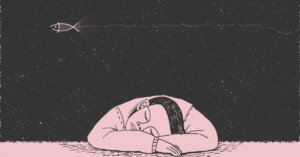 The role of circus people in Hard Times is both tangible and symbolic. Dickens presents the world of circus as diametrically opposite to the world of realism. The primary essence of Charles Dickens’s art lies in his ability to transform the mundane visible reality to an altered quasi- symbolic environment, where the characters get elevated to a sphere of symbolic existence. Fundamentally dealing with the destructive forces of industrial revolution and the deliberate distortion of Utilitarianism to confine human Imagination, his novel Hard Times explores those arenas, which enable such an examination with greatest proficiency.
The role of circus people in Hard Times is both tangible and symbolic. Dickens presents the world of circus as diametrically opposite to the world of realism. The primary essence of Charles Dickens’s art lies in his ability to transform the mundane visible reality to an altered quasi- symbolic environment, where the characters get elevated to a sphere of symbolic existence. Fundamentally dealing with the destructive forces of industrial revolution and the deliberate distortion of Utilitarianism to confine human Imagination, his novel Hard Times explores those arenas, which enable such an examination with greatest proficiency.
The way in which the horse riding takes on its significance illustrates beautifully the poetic-dramatic nature of Dickens’s art. The presence of the circus group finds the first mention in the chapter “A Loophole”, where Mr. Gradgrind drags his children away from the apparently destructive influence of the sight of a circus.

(by Charles Stanley Reinhart)
The initial descriptions in Hard Times present the circus people as representations of human spontaneity, a sense of buoyancy and poise. Their skills have no value for the utilitarian calculus, but they express vital human needs. Their actions generate in the lives of the Coketown people, not only amusement but art. In investing a traveling circus with this kind of symbolic value, Dickens expresses a profounder reaction to industrialism than the obvious process of direct satire.

The circus embodies and its members dramatize the social paternalists’ trope: the family-society metaphor. The unrelated individuals of the circus society come together and behave like a loyal family. The whole group interacts as an extended family, which is stressed when Sleary explains to Sissy the advantages of staying with the troupe: “Emma Gordon in whothe (whose) lap you’re a lying at prethent (present), would be a mother to you and Jothpine (Josephine) would be a thithter (sister) to you”.
Curiously enough, close to the end of the novel, a clown at a circus performance tells a curious riddle, that even can be considered as the novel’s psychological icon; that is, the riddle concerning the structure of the threes, the psychological stages of sowing, reaping and garnering, or youth maturity and old age. Solving such a riddle is all about solving the conflict between “Fact” and “Fancy”, forces that are reconciled only in the lives of the circus troupe. Their attitude comprise of realizing what life is all about…living to the lees, and yet living it on the lines of complete fellow feeling.
Additional Reading
The Return of the Native: Hardy’s Tragic Vision
Egdon Heath, sunk in history, representing both Man and the stage on which human drama has been performed from time...
Read MorePride and Prejudice: Use of Irony As Narrative Device
The most important among the narrative modes of Jane Austen is her use of irony. Irony may be defined as...
Read MoreWomen Characters in David Copperfield
It has been said that Dickens is not generally successful in drawing female characters and that his men are as...
Read More






